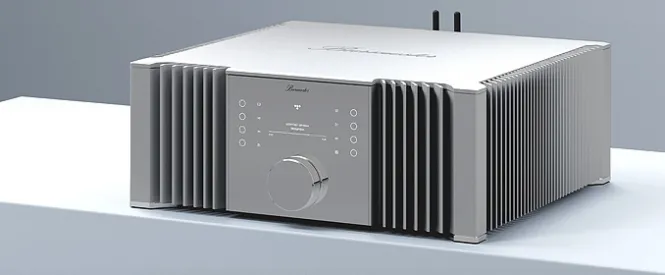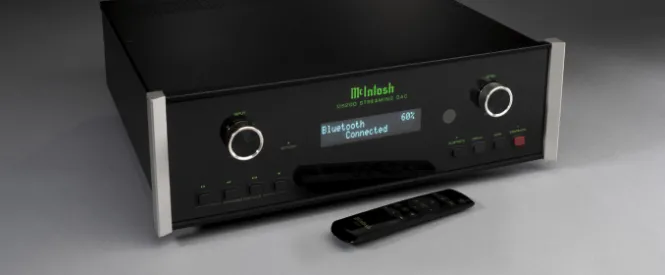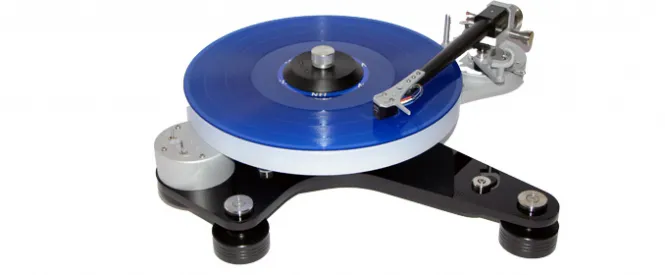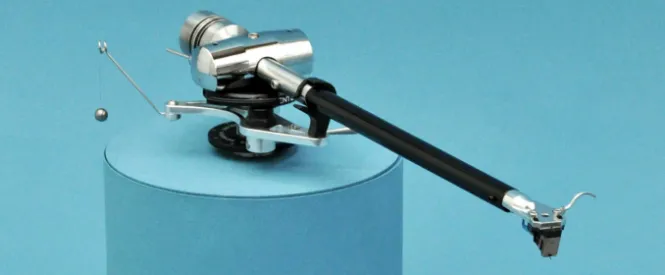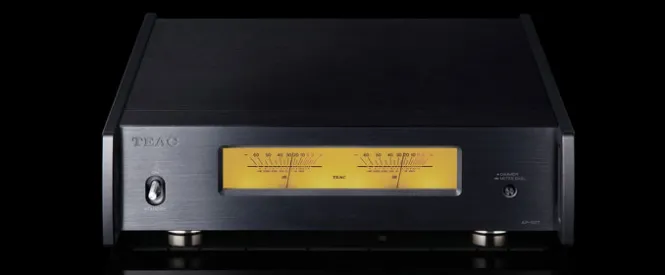Devialet Dione Soundbar Review
After revolutionising wireless speakers with its sublime Phantom, Michael Darroch asks whether Devialet can bring the same performance to soundbars…
Devialet
Dione Soundbar
£1,990
Readers who have enjoyed the pleasure of listening to Devialet's Phantom range of speakers will know that the brand is at the cutting edge of what's possible from compact wireless solutions. While it might sound an unusual move for a premium brand like Devialet to enter the soundbar market, it makes perfect sense as the unique demands of this product type are in direct alignment with the company's wireless speakers – high performance, compact size and striking aesthetics. The new Dione soundbar is Devialet's first foray into soundbars, so can this relative newcomer usurp the current king of the hill, Sennheiser's venerated AMBEO?
The Dione begins with seemingly innocent specifications on paper. Dolby/LPCM support via a single eARC HDMI 2.1 input, along with optical TOSLINK, supplanted by Gigabit Ethernet, Bluetooth 5.0 and Wi-Fi connectivity up to 5GHz to allow for Airplay2, Spotify Connect and UPnP streaming at up to 24bit/96kHz. It's surprising to see only a single HDMI input and no DTS support, but this is becoming commonplace – and the lack of additional HDMI inputs only really matters if your TV doesn't feature eARC.
This product sports no less than 17 drivers in a 5.1.2 Dolby Atmos configuration, with a claimed 950W RMS of power through its proprietary Devialet Intelligence Processor. This means you get the same technology found across the range, headlined by the company's Analogue Digital Hybrid amplification and Speaker Active Matching. We covered these functions in more detail in our Phantom II review, but simply put, ADH merges the finesse of Class A and brute force of Class D amplification to enable a powerful but musical sound. SAM modulates the output signal to ensure the speaker is never pushed beyond its limits, resulting in a claimed THD figure of just 0.001%. Devialet's Adaptive Volume Levelling is also included, said to improve intelligibility, and Advanced Dimensional Experience, which uses filtering to enhance surround performance.
Eight of the aforementioned drivers are 134mm, aluminium, high-excursion sub-woofers. Normally I would be reticent to describe a 134mm driver as a subwoofer, but I've seen first-hand what Devialet is capable of when it comes to small-form bass performance. Looking at an exploded view of the Dione illustrates how tightly packaged all these drivers are. The remaining output channels borrow heavily from the philosophy of the Phantom II speakers. There's a single full-range aluminium 41mm driver for each of the L/C/R channels, with a further 41mm driver side-mounted at both ends for reflected surround effects and two upfiring drivers on each side of the top surface to provide the Atmos effects. The claimed frequency response is 24Hz to 21kHz, with a maximum output level of 101dB.
While the main chassis of the unit is a purpose-dictated rectangular shape, it has been tastefully wrapped in acoustically transparent premium cloth. At 1,200mm by 165mm by 88mm, the Dione matches within a few mm the width of other soundbars like the Klipsch Cinema 1200 or Sonos ARC, and weighs a hefty 12kg. The unique centre channel design is mounted inside an orb which becomes the visual focus of the entire aesthetic. This cleverly rotates around in its mounting to allow correct channel aim when wall mounting the Dione.
With rear-firing subwoofers, the Dione can't just be popped onto a wall in a consistent orientation like many soundbars. Instead, the solution is to mount the unit with the bottom surface towards the wall. This gives the subwoofers free-air, resulting in the left/right channels becoming the Atmos height channels and vice-versa. By allowing the diagonal rotation of the central orb, it ensures that the centre channel is directed into the room and not simply into the bottom of your TV. Holding this in place is a well-engineered metal plate across the top which wraps under and around the central orb. It's an eye-catching centrepiece for your entertainment area.
GETTING GOING
Simple to set up, the Dione is a true one-piece solution with not even a remote control to complicate things – though it is compatible with the Devialet Remote Phantom accessory. The Devialet App will quickly detect and allow you to set up your device, becoming the output for both your TV and also things like Spotify Connect. As with the Phantom speakers, hi-res audio will require a UPnP renderer to play to your Dione. This is an unnecessary complexity, in this writer's opinion, particularly given the huge processing power on-tap in Dione's Intelligence Processor. User selections during setup involve the orientation of the Dione and a simple room calibration feature. In my case, the differences were slight between calibrated and uncalibrated modes but may vary in other room environments.
The app interface is clean, reliable and intuitive to use, with Devialet having designed several sound modes into the Dione, which vary based on the source you are using. For example, when using the HDMI input, you will be given a choice of Movie, Music and Dialogue modes. Movie gives a well-rounded entertainment experience, whereas Music helps give proper depth when watching music clips on YouTube, for example, making a more pleasant and rich listening experience. When faced with an Atmos source, the Dione will change to Atmos mode exclusively. When listening to audio-only, such as Spotify, the options change to Music, Dialogue and Spatial. I usually steer clear of party modes for adding audio above what was originally mastered, but the Dione pleasantly surprised me; Spatial mode added width and height to the soundstage but without significantly colouring the tone, leaving the character of the audio largely intact.
While it may seem like these modes cater for the vast majority of your listening, and largely they do, a notable absence is the complete lack of any EQ functionality. In fact, once you get into Dolby Atmos content, Devialet maintains absolute control – allowing only the Atmos sound field processing to present the sound, lacking any personal input in what your ears receive.
THE LISTENING
Musically, it was immediately clear that the positive qualities of the Phantom speakers have been transplanted into the Dione to great effect. The first thing that struck me was the familiar character of exceptional clarity and detail available through the full-range drivers. Playing Elton John's Rocket Man, for example, I could hear the raw texture of John's gentle piano, with Davey Johnstone's guitar work making for insightful listening, with unexpected richness. I was also happily surprised by the level of bass output, considering the humble dimensions of the Dione. The subwoofers worked together well to supplant the most rigorous drum or bassline riffs without argument, belying the small package astonishingly.
The lossless version of A Perfect Circle's The Package was an intensely rewarding listen. The opening bassline was very forceful, considering there's no external subwoofer in play, and also tightly controlled. Percussion had crystalline clarity, and when the mellow vocal line of Maynard Keenan finally revealed itself, it was suitably charming. While the heavy guitar riffs can often lack weight when played through soundbars, there was no sign of this in the Dione; the guitar and deep drum rolls had remarkable body and precision.
One of the challenges facing any soundbar is creating a wide soundstage from a narrow platform, and to this end, the Dione performs very strongly. The overall width allows good left/right separation, and the addition of the side-firing drivers for the surround channels creates a convincingly spacious performance across the listening plane. In comparison, surround performance felt less weighted; the Dione had the ability to place objects to the sides of the listener. However, a combination of the very neutral balance of the surround and main channels, along with lack of level adjustment, meant that often these cues would not be prominent enough to provide a really indulgent level of surround performance. I'd love to see what Devialet could create in the realm of wireless surround speakers to partner with the Dione, but we're unaware of any plans for such an accessory.
As far as Atmos demonstrations go, the early race scene from Ready Player One is frequently recommended as a great example of dynamic, enveloping surround and height performances. It's punctuated by heavy bass in the many explosions and collisions on screen as the field race their demolition derby in search of the hidden egg. Volume was absolutely no problem for the Dione – with a scale up to 100, I found even 50 was enough to be at the edge of comfort depending on the source. This is no small task for a speaker of this size and certainly enough to fill even a large family room with a theatrical sound level.
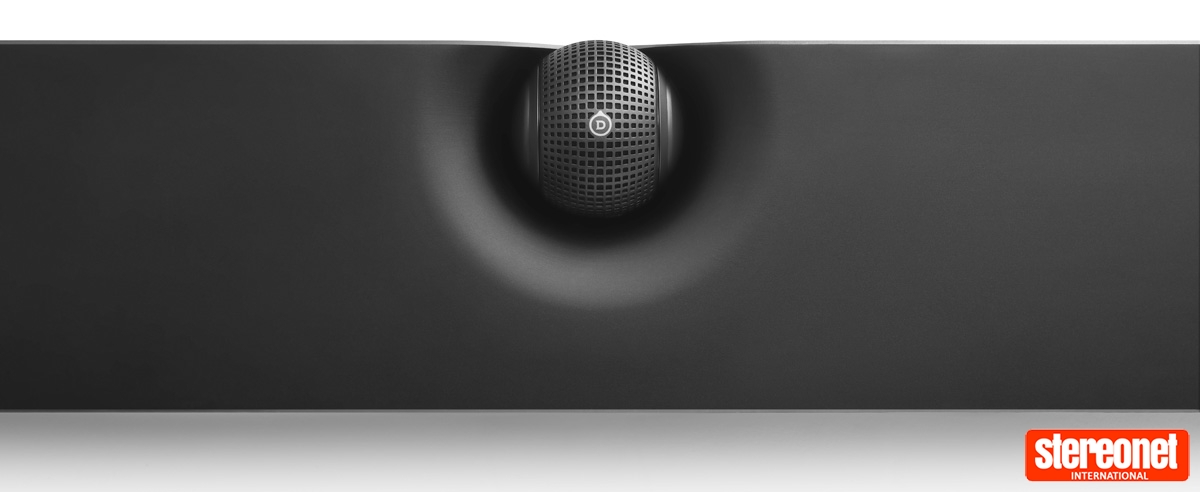
This soundbar conjured up a detailed and dynamic soundstage that stretched widely around the front listening space. However, despite all those formidably powered subwoofers, the bass performance during this scene was unremarkable. Whether it was the tumbling subway train, the swinging wrecking ball, the rampaging T-Rex, or Kong's attack – there was simply not the low-end presence I would have expected in this scene. This is particularly perplexing given the amount of bass on offer from other source materials, which makes me believe that allowing more control of the EQ to be given to the user might enable some improvement in this case.
The experience could not have been more different when viewing the UHD Blu-ray of 10 Cloverfield Lane. The penultimate scene, when Michelle escapes the bunker, only to find the chaos outside, is a thrilling Atmos demonstration. It incorporates some captivating ambient noise and dramatic action pieces, and the Dione did a sublime job reproducing the highs and lows of this scene. As Michelle lifted her mask, my room opened up with the delicate noises of rural nature, the surround and height channels doing their bit to create a believable environment. Things take a low turn as the drop-ship rumbles atop the field to investigate the bunker explosion, with a tactile level of bass output from the Dione, which shows that there are many circumstances where an external subwoofer is just not needed.
The tension really winds up as Michelle hides in the pump shed while the alien creature stalks across the roof, and the Dione placed the height effects convincingly to maximum dramatic effect. There was a wide dynamic range on offer here, which is rarely available in a living room format such as this, which culminates as the largest ship comes tumbling into the ground in a cacophony of bass-heavy explosions.
For more traditional soundtrack sources, The Dark Knight Rises remains a benchmark 5.1 channel lossless presentation. The Dione again shone with dramatic effort while watching the stock-market heist and subsequent chase from early in the movie. The Hans Zimmer score soared proudly while heralding the bat-cycle chase scene, with pounding drums intensifying the satisfying depth of the soundtrack until The Bat soars out above the chasing police in a deafening roar – the Dione was flawless in its reproduction of this soundtrack, with the headroom and range to really bring out the most of a high-powered audio feast.
The Dione will significantly improve the quality of your entertainment experience by a large factor compared to the standard sound from your TV, as well as eclipsing most soundbars on the market today. Having said that, depending on the content, the bass performance for movie sources can be inconsistent. I suspect a lot of this comes down to the choices made in designing the processing algorithms, which dictates what the end user hears. This factor is made somewhat more obvious due to the complete absence of EQ adjustment; this removes any ability of the user to try and accommodate quirks in the output unique to a given soundtrack. Despite this, there is still a lot to be enthralled by in the delivery of the Dione as an all-around media device.
THE VERDICT
 Devialet's Dione sets a high bar for technology and performance in a single-piece soundbar. If movie watching and Atmos performance are your primary considerations, then the lack of EQ in the sound processing leaves room for improvement. Still, the integration of many technologies and design philosophies from the Phantom range means that the Dione is unrivalled for those who also want great musical performance from the soundbar format. Combining this with the high quality of engineering, incredible volume output, detailed sound, and generally strong bass performance, the French company's first foray into the soundbar market should send shivers down the spine of its established competitors. Sennheiser's aforementioned AMBEO, and its rivals, may have some sleepless nights from now on.
Devialet's Dione sets a high bar for technology and performance in a single-piece soundbar. If movie watching and Atmos performance are your primary considerations, then the lack of EQ in the sound processing leaves room for improvement. Still, the integration of many technologies and design philosophies from the Phantom range means that the Dione is unrivalled for those who also want great musical performance from the soundbar format. Combining this with the high quality of engineering, incredible volume output, detailed sound, and generally strong bass performance, the French company's first foray into the soundbar market should send shivers down the spine of its established competitors. Sennheiser's aforementioned AMBEO, and its rivals, may have some sleepless nights from now on.
For more information visit Devialet
Michael Darroch
With a 20 year passion for home cinema ensuring he will never be able to afford retirement, Michael’s days involve endless dad-jokes and enjoying the short time before his son is old enough to demand the home theatre becomes a temple to Frozen II.
Posted in: Applause Awards | 2022 | Loudspeakers | Soundbars | Home Theatre | Lifestyle
JOIN IN THE DISCUSSION
Want to share your opinion or get advice from other enthusiasts? Then head into the Message
Forums where thousands of other enthusiasts are communicating on a daily basis.
CLICK HERE FOR FREE MEMBERSHIP
Trending
applause awards
Each time StereoNET reviews a product, it is considered for an Applause Award. Winning one marks it out as a design of great quality and distinction – a special product in its class, on the grounds of either performance, value for money, or usually both.
Applause Awards are personally issued by StereoNET’s global Editor-in-Chief, David Price – who has over three decades of experience reviewing hi-fi products at the highest level – after consulting with our senior editorial team. They are not automatically given with all reviews, nor can manufacturers purchase them.
The StereoNET editorial team includes some of the world’s most experienced and respected hi-fi journalists with a vast wealth of knowledge. Some have edited popular English language hi-fi magazines, and others have been senior contributors to famous audio journals stretching back to the late 1970s. And we also employ professional IT and home theatre specialists who work at the cutting edge of today’s technology.
We believe that no other online hi-fi and home cinema resource offers such expert knowledge, so when StereoNET gives an Applause Award, it is a trustworthy hallmark of quality. Receiving such an award is the prerequisite to becoming eligible for our annual Product of the Year awards, awarded only to the finest designs in their respective categories. Buyers of hi-fi, home cinema, and headphones can be sure that a StereoNET Applause Award winner is worthy of your most serious attention.

